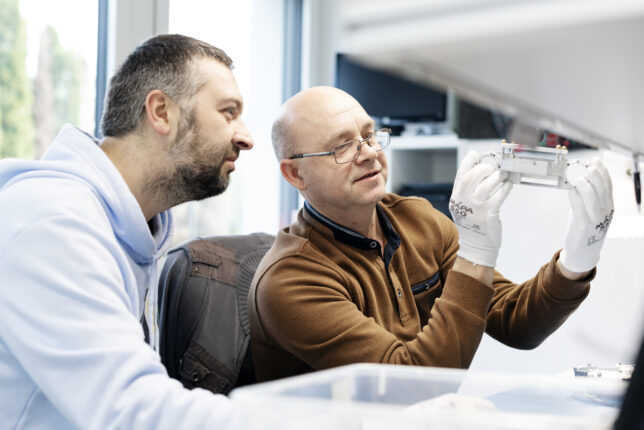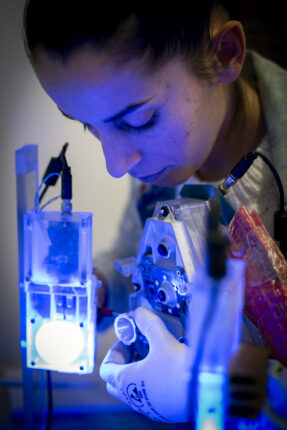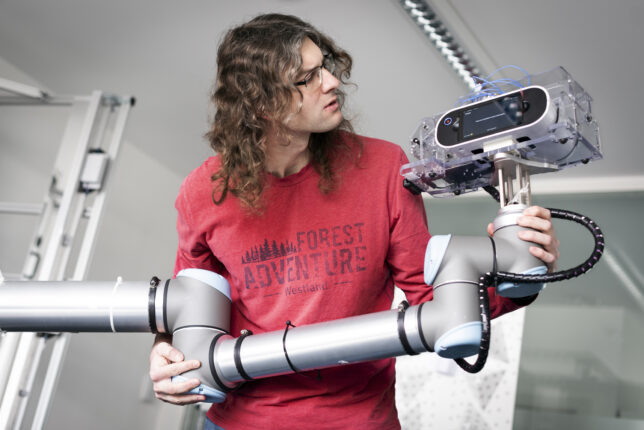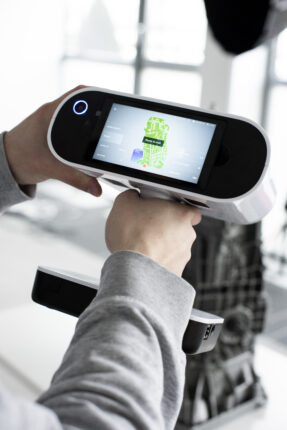When the US Actors’ union goes on strike over a disagreement with Hollywood studios about using AI to create « digital twins » of actors, it may still sound like science fiction to many. Not to the team at Artec 3D. When Artec’s success story began 17 years ago in California, computer graphics artists, visual effects producers and TV and film creatives were among the start-up company’s first customers, using its handheld scanners to create ultra-realistic visual effects.
With a master’s degree in optics and electronics and expertise in face recognition techniques, Artyom Yukhin, founder and CEO of Artec 3D, saw an opportunity to develop portable, contactless 3D scanning devices for professional use. The market breakthrough was immediate and the company achieved break-even after only a few months. This market success is due in particular to the wide range of applications for its innovative 3D scanning technology. Whether in the design and manufacture of automotive components, in modelling the human body for prosthetics or other medical applications, in creating virtual copies of crime/accident scenes by forensic scientists, in capturing data of entire buildings or urban spaces in architecture, in accurately documenting ancient findings for heritage preservation, or in designing and restoring jewellery – to name just a few of the many use cases – the various scanning instruments in the Artec 3D portfolio enable designers and engineers from very diverse industries to increase their efficiency and productivity by scanning objects, environments or people and creating digital twins in a very fast way and with highly accurate scan data.
With more than half of its customers based in Europe, the company decided to move its headquarters to Luxembourg in 2010, attracted by the country’s central location, its multilingual and multicultural environment and its openness to technology. The latter aspect was particularly reflected in the high level of government support for Artec’s innovation and development projects.
Shortly after setting up in Luxembourg, the company launched its in-house production line, initially dedicated to prototyping. This strategy allowed the company to avoid the time-consuming back-and-forth with Asian suppliers that would normally be required at this stage, as well as taking into account IP-related aspects. The advantage of having its own production facilities proved extremely valuable during the Covid pandemic and the disruption of supply chains. Being able to assemble their products in-house allowed them to continue to run their business and serve their customers during these challenging times.
Meanwhile, Artec 3D has consolidated its presence in Luxembourg with the opening in 2023 of a new production factory in Senningerberg, equipped with a fully automated production line in a 300 m² clean room. This clean room, with controlled temperature, pressure, hygrometry and hygiene, is necessary for the production of very small, micro-precision opto-electronic parts.
Today, about half of the company’s employees work in Luxembourg (ca. 110), most of them in research. In addition to the Luxembourg site and a number of regional sales offices and showrooms in the USA, China and Japan, Artec 3D also operates an R&D centre on the coast of Montenegro and is about to open new premises in Portugal.
In terms of industrial use cases, Artec’s 3D scanning technology is expected to bring significant advances, especially in the areas of energy transition and infrastructure. Let’s look at some examples.
Thanks to fast, easy and highly accurate 3D modelling, manufacturing will definitely become more sustainable. There will no longer be a need to produce and store multiple spare parts, as manufacturing, especially additive manufacturing, can be organised in a targeted and efficient way, reducing costs and saving time.
Another example: In the automative industry, which is today undergoing a major transformation, handheld and wireless 3D scanners are a valuable and easy-to-use tool for reverse engineering design. With some basic training, the engineer is able to digitally reproduce components with very high accuracy. This scanning solution can be integrated into existing design workflows or used independently and is compatible with existing CAD/CAM programmes.
Even in complex energy facilities with intricate piping systems, infrastructure can be inspected and maintained much more easily and accurately. 3D scanning makes it easy to identify the faulty part or section and take repair action. In all areas of application, the 3D coordinate measuring systems can be used efficiently for quality inspection, whether on the machined part, in the assembly process or on the material.
Artec 3D’s business model is to sell the hardware, while the software can be subscribed to on an annual basis to benefit from ongoing updates. A key point is that for sensitive applications where data must be stored securely (e.g. military, forensics, etc.), all data remains on the customer’s infrastructure.
Currently, Artec 3D devices include an autopilot model powered by AI. In this regard, software developers rely on AI technology to take their algorithms and solutions to the next level. This could be the scanning of entire plants or, for example, a complete hospital layout, where much more data needs to be captured and processed. It goes without saying that such developments take years to mature and require the expertise of highly qualified staff.
In this respect, Artec also benefits from the Luxembourg ecosystem by pursuing long-term collaborations with the University of Luxembourg, SnT, Luxinnovation and other players. While the company recruits designers, analysts and software developers all over the world, these collaborations also bring Artec 3D into contact with students working in the field. But the « training » of specialists starts even earlier: Artec recently took part in a training initiative for secondary school students and was able to inspire the young participants with practical demonstrations of 3D scanning.
Although Artec 3D is now a world leader in scanning technology, with a global client base of well-known brands, the potential of AI and big data still holds out the promise of great technological challenges for the company.






